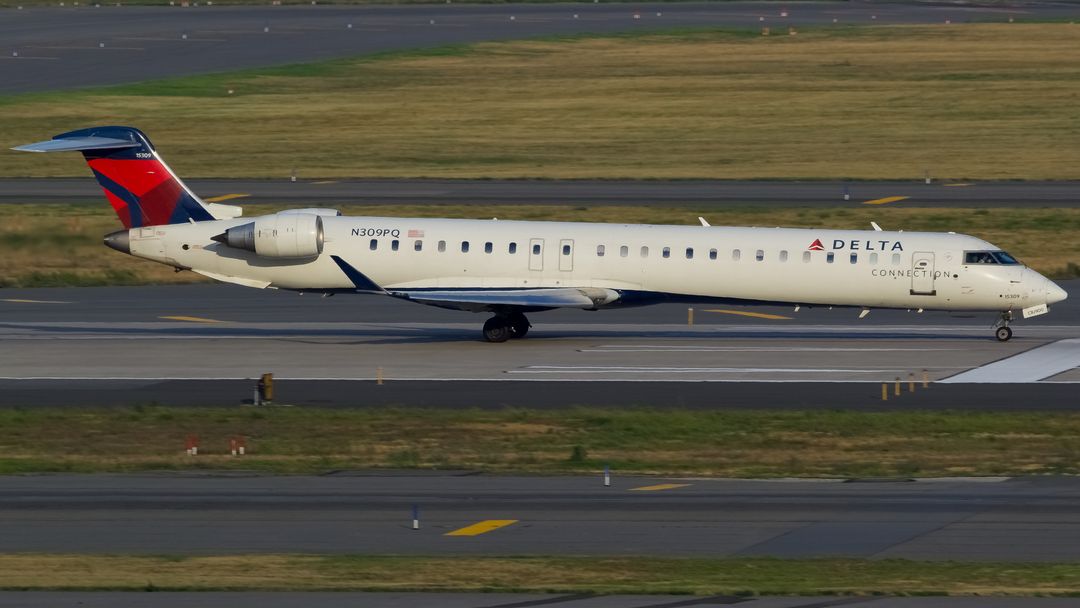Even at the largest airports, it is not uncommon to see a small propeller-driven aircraft sharing the taxiways with the giants. They will tuck their light twins or single-engine turboprops up close to the terminal, and often, as few as two or three passengers go aboard.
If you’ve ever looked out the concourse windows and watched these folks doing their thing, you are most likely seeing an Essential Air Service (EAS) carrier in operation. Similarly, are you looking for a connecting flight to Muscle Shoals, AL? Or Prescott, AZ? How about Quincy, IL, or Johnstown, PA? If you are, the chances you will find yourself on an EAS airline are close to 100%. But what exactly is an EAS air carrier?

The Essential Air Service program was implemented to guarantee that small communities served by certified air carriers before airline deregulation maintained a minimal level of scheduled air service. The Airline Deregulation Act of 1978 gave airlines significant flexibility to determine which markets to serve domestically and what fares to charge for that service. Before this change, the federal government highly regulated airline routes and fares.
One of the potential consequences of freeing up major airlines’ independent decision-making was that smaller markets deemed less profitable or unprofitable would lose their connection to the National Air Service system completely. The EAS program ensures that small communities across America can continue to avail themselves of the economic and quality of life benefits that scheduled air services offer.
Small towns all over America benefit from the EAS program. Approximately 60 communities in Alaska and 115 in the lower 48 contiguous states are connected to large and medium hub airports through EAS service providers. It is a cooperative effort between the federal government, the airlines, and the communities they serve.

Airlines interested in servicing an EAS route will propose service to the community. That community may accept or decline their proposal. When the community agrees with a proposal, their agreement with the airline is then presented to the Department of Transportation (DOT) for approval.
Communities may request certain conditions. For example, communities may prefer jet service to turboprop service or multi-engine aircraft over single-engine aircraft. Often, these conditions are imposed on the community by a large manufacturer or commercial enterprise that may restrict employee business travel to jet or multi-engine aircraft.
Once the DOT has approved the proposed contract between an airline and an EAS community, the airline sells tickets, and the federal government agrees to cover the difference to ensure the airline does not lose money. This is generally accomplished by subsidizing two round trips daily to a large- or medium-hub airport. Aircraft as large as 30- to 50-seat aircraft are often utilized on such routes, but EAS carriers may provide additional frequencies with aircraft with nine seats or fewer.

EAS routes are not restricted to small airlines flying small planes. In 2023, American and United both served EAS communities. For example, American Airlines connected the town of Waterloo, Iowa, to Chicago’s O’Hare International Airport, and United connected Agusta, Maine, to Boston’s Logan International Airport.
SkyWest - the country’s largest regional airline, with nearly 500 planes and one of the largest airlines in the world - served 34 city pairs for EAS communities last year. Just three years ago, SkyWest served nearly double that number of city pairs. Other smaller but familiar carriers include Contour, Cape Air, Southern Airways Express, and Key Lime, serving as few as nine city pairs last year.
Some of these commuter-class airlines have greatly grown while serving in the EAS program. Air Choice One, a family-owned airline based in St. Louis, MO, grew from a fixed base operation providing charter service into a fleet of over a dozen Cessna Caravan turboprop aircraft, employing over 60 pilots and serving 13 cities across the Midwest in less than ten years.

It was acquired by Southern Airways Express in 2022. Southern now serves nearly forty cities and, along with its Hawaiian brand Mokulele Airlines, provides a route network that stretches from the Hawaiian Islands to Pennsylvania. The Air Choice One acquisition was the fifth airline purchase in its short nine-year history. While most EAS communities are within a few hundred miles of a medium or large hub airport, EAS routes are not restricted in length. In 2003, Sun Country connected the town of Eau Claire, Wisconsin, to Minneapolis and Ft. Myers, Florida.
The EAS subsidy the federal government provides is determined on a route-by-route basis by the difference between the forecast annual expenses to serve that route (including a modest profit element of typically five percent, but not limited to that) and the forecast annual revenues the airline will receive. For example, if a carrier forecasted $3.5 million in expenses (including the profit element) and $1.4 million in revenue (passenger and cargo), the annual subsidy would be $2.1 million.
If the carrier generates more than the forecast revenue, the DOT does not reduce the carrier’s subsidy. Similarly, if the airline generates less than the projected revenues, the DOT does not increase the carrier’s subsidy, and the carrier absorbs the loss. This serves as an incentive for the airline to provide the best service possible.
The amount of subsidy the government is willing to provide is not limitless. The DOT may reject the proposal if the subsidy required for the service is too great. Often, there is more than one airline bidding on a contract. City councils typically vote after hosting presentations made by competing airlines.
The types of aircraft employed on EAS routes vary widely. For example, United’s Presque Island-Newark service is provided by GoJet on the luxurious Canadair Regional Jet 550; essentially a CRJ700 limited to 50 seats of three-class service and extra storage for carry-on baggage. SkyWest serves its EAS communities primarily with RJ200s with a 50-seat capacity.
The Southern Airways fleet comprises the 8-seat, single-engine turboprop Cessna Grand Caravan, while Boutique uses the Pilates PC-12 with an “executive” 8-seat configuration. Cape Air still flies several Cessna 402 light twins with 6-9 passenger seats. The C-402 is a non-turboprop, regular piston-engine airplane.
There are several benefits and a few drawbacks to traveling via the EAS program. The primary benefit of the EAS program is that smaller markets get direct access to hub airports with connections to the rest of the country and the world. The DOT prefers EAS applicant carriers with code-sharing agreements or interline arrangements with a larger carrier that allow passengers and cargo to flow smoothly through the hub airport, thanks to single reservation, ticketing, and baggage check-in services.
Indeed, small and rural communities are embracing opportunities to maintain their civic viability by attracting more workers. Especially as the internet and other connectivity methods allow employers to provide remote and hybrid work opportunities, Essential Air Service enhances the incentive for workers to live in less expensive and less crowded communities closer to home and family.
Individual passengers may enjoy the convenience and “hassle-free” experience of using their local airport without having to stand in long security lines for extended periods. Boarding an aircraft with just a handful of other passengers might also lead to a more relaxing travel experience. However, if a smaller carrier serves the EAS community, the passenger must be comfortable flying on smaller aircraft.
In the future, airline consolidation at all levels might affect the economics of serving smaller markets. Additionally, new technology, such as more efficient aircraft or air taxi vehicles, may provide methods of serving remote communities with air service sufficient to lessen the need for subsidized airline service. But until then, the federal government, local community leaders, and airlines, both large and small, are making it possible to provide all parts of the U.S. with the myriad benefits of aviation. Their dedication to such services makes aviation a leading benefactor to the prosperity of people regardless of geographic location.
How Evio’s 810 Airliner Aims to Rescue Regional Aviation » Emirates A380 Makes Emergency Return to London Heathrow After New Year’s Eve Gear Failure » Lufthansa Technik Unveils Major ACJ318 Elite Upgrade Program »
Comments (0)
Add Your Comment
SHARE
TAGS
INFORMATIONAL EAS Essential Air Service United AirlinesAmerican Airlines SkyWest Contour Key Lime Southern Ariways Boutique Air Air Choice One HistoryRECENTLY PUBLISHED
 This Week in Aviation: The 10 Stories That Mattered Most
From major airline developments to aircraft updates and industry shifts, this weekly recap highlights the ten most-read aviation stories from the week of December 28.
INFORMATIONAL
READ MORE »
This Week in Aviation: The 10 Stories That Mattered Most
From major airline developments to aircraft updates and industry shifts, this weekly recap highlights the ten most-read aviation stories from the week of December 28.
INFORMATIONAL
READ MORE »
 Nearly 500 Flights Cancelled Following Venezuela Attack, Caribbean Airspace Closure
Hundreds of flights have been cancelled this morning after an overnight U.S. military attack in Venezuela left airspace in much of the Caribbean closed.
NEWS
READ MORE »
Nearly 500 Flights Cancelled Following Venezuela Attack, Caribbean Airspace Closure
Hundreds of flights have been cancelled this morning after an overnight U.S. military attack in Venezuela left airspace in much of the Caribbean closed.
NEWS
READ MORE »
 Why Airline Class Wars Will Intensify in 2026
The "Class War" of 2026 is no longer just about legroom; it is a calculated, multi-billion-dollar strategic pivot by Original Equipment Manufacturers (OEMs) and carriers to capture a "splurge-ready" traveller base that is increasingly opting for "one big trip" over frequent, low-cost hops.
INFORMATIONAL
READ MORE »
Why Airline Class Wars Will Intensify in 2026
The "Class War" of 2026 is no longer just about legroom; it is a calculated, multi-billion-dollar strategic pivot by Original Equipment Manufacturers (OEMs) and carriers to capture a "splurge-ready" traveller base that is increasingly opting for "one big trip" over frequent, low-cost hops.
INFORMATIONAL
READ MORE »



